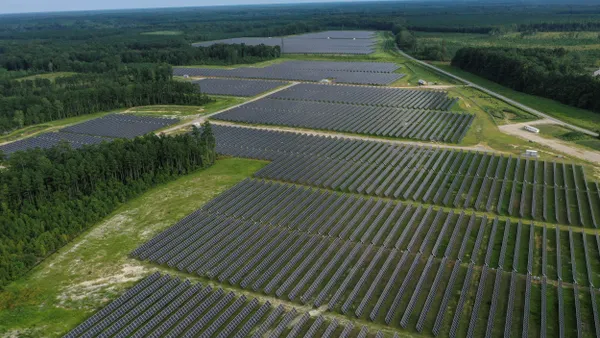Dive Brief:
- The Imperial Irrigation District (IID), the public utility that serves California’s Imperial and Coachella Valleys and their abundant agricultural resources, last week suspended new subscriptions to its net energy metering [NEM] program for rooftop solar after meeting the state-legislated metering capacity of 5% of its peak electricity demand.
- The California Public Utility Commission’s NEM 2.0 proceeding recently instructed the state’s investor owned utilities (IOUs) to keep the retail rate credit they provide to solar owners for the electricity their systems export to the grid in place through 2019 regardless of the percent of peak load it represents.
- As a public utility, the IID was not bound by the state regulators' NEM ruling on its $0.0572/kWh credit for exported solar. It is governed instead by 2009's AB 920 5% cap on NEM, which remains in place.
Dive Insight:
Solar advocates in the IID territory say this decision will depress the local solar industry. The utility argues there is no intent to impede solar growth and only customers who intend to generate significantly more power than they use, a common practice in agricultural regions, will be harmed.
IID's 2,589 solar customers got $63,406 in credits last year, the utility reported.
In a statement on the utility's solar incentive website, officials wrote that "new solar installations interconnecting to IID’s system will no longer receive annual excess-generation energy credits," and that any interconnection costs for new solar systems will be the "sole responsibility of the applicant."
"IID will continue to process incentive program applications as well as interconnection applications," officials wrote. "As the program is first-come-first-served, in the event that NEM capacity becomes available it will be offered to the subsequent interconnection."
IID has drawn the ire of solar advocates in the past, the Desert Sun notes. In 2014, the utility reduced its incentives for small solar systems from $1.55/watt to $0.50/watt, prompting one installer to label the initiative the "worst solar rebate program on God's green earth."
The current net metering dispute reflects many of the same elements of the struggle that led to state regulators' decision to preserve retail rate NEM in late 2015. Solar backers lobbied the commission hard at the end of the year, delivering wheelbarrows full of more than 130,000 petitions from solar customers asking that the retail rate credit be preserved.
In response a proposed decision in December from regulators to preserve the retail rate credit, California’s IOUs filed comments that proposed to gradually reduce the NEM credits which, they argued, shift undue costs for grid upkeep to non-solar owners, since consumers with rooftop systems pay less to the utility.
The months of lobbying culminated in a narrow 3-2 vote, with the regulators deciding to sustain the NEM credit at the retail rate for three more years. In 2019, however, the regulators said they would revisit the issue, aiming for a more comprehensive valuation scheme for distributed resources like solar.














